The Haptic Technology for Mobile Devices Market is estimated to be valued at US$ 4.73 billion in 2025 and is expected to reach US$ 18.49 billion by 2032, exhibiting a compound annual growth rate (CAGR) of 21.5% from 2025 to 2032. The incorporation of haptic technology allows mobile devices to emulate tactile feedback through vibrations or motions, enhancing user experience.
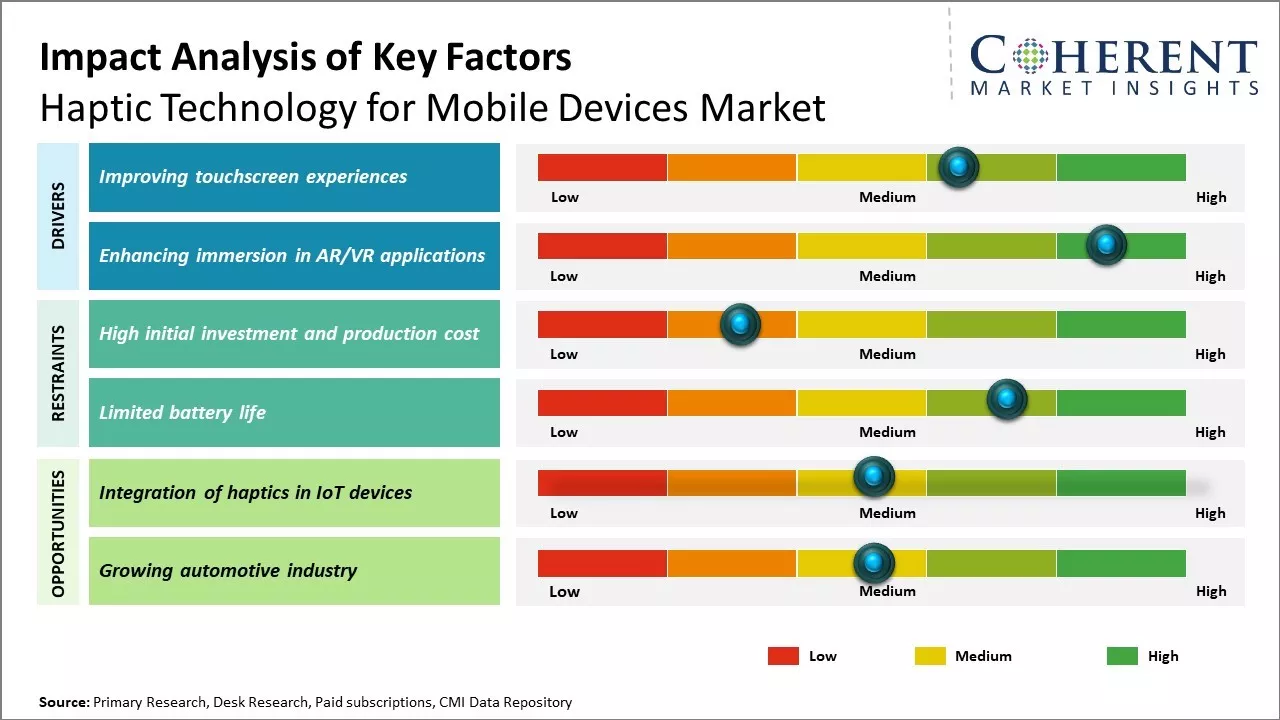
Discover market dynamics shaping the industry: Download Free Sample
The market is expected to witness significant growth over the forecast period. This can be attributed to the rising demand for interactive and immersive technologies across industries. As haptics provide a more lifelike simulation to digital interfaces, major tech companies are investing heavily in R&D to integrate advanced haptic solutions in their products. Growing penetration of VR/AR applications and increasing usage of smartphones are also driving the need for haptics. The adoption of haptics is further expected to elevate with the proliferation of 5G technology enabling more sophisticated haptic experiences.
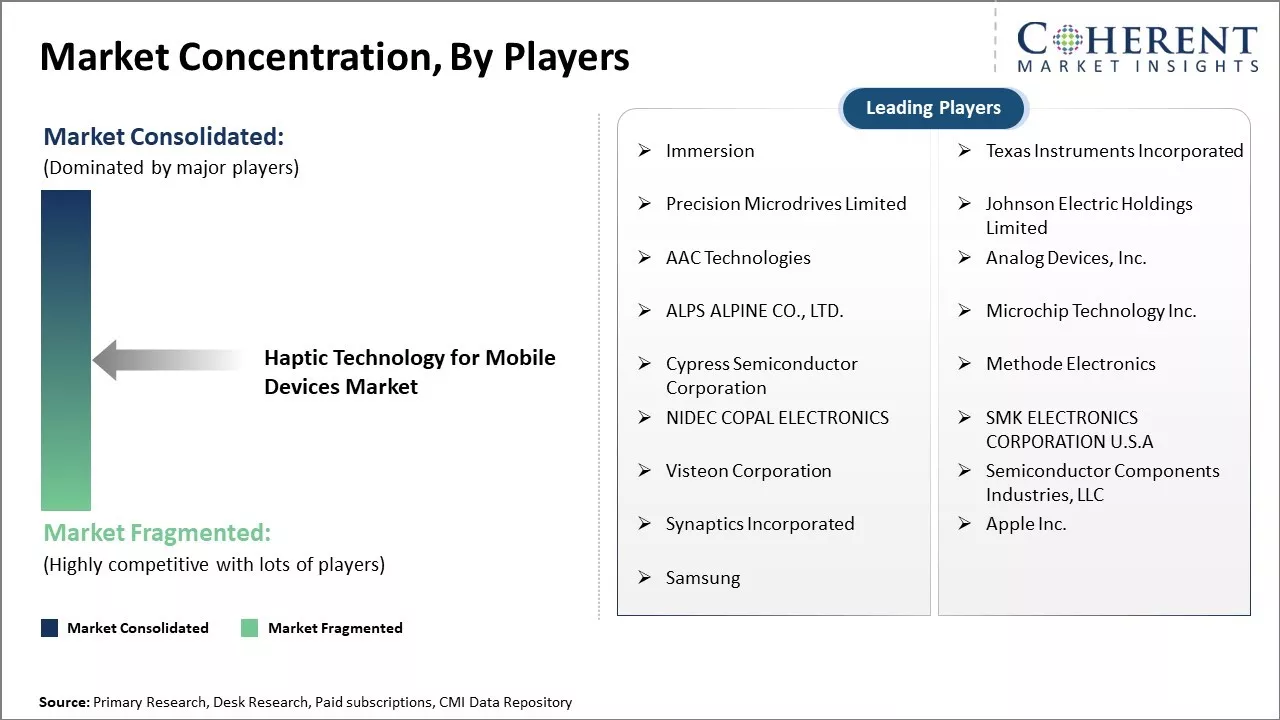
Get actionable strategies to beat competition: Download Free Sample
Haptic Technology for Mobile Devices Market Drivers:Improving touchscreen experiences
As touchscreens have rapidly replaced physical buttons on mobile devices, the need for further advancement in touch-based interactions has grown. While traditional touch allows for basic tactile feedback, it provides little sense of texture, weight or force. As a result, user experiences can feel flat or detatched from on-screen actions. Haptic technology addresses this by generating variable vibrations, taps and other physical sensations that mimic real-world interactions. This allows mobile interfaces to feel more natural, intuitive and immersive.
Manufacturers are increasingly utilizing haptic motors and actuators to provide enhanced tactile feedback. Basic vibrations for notifications are just the start - haptics can recreate the feel of different surfaces, weights and impacts through meticulously designed vibration patterns. This level of immersion is opening up new interaction paradigms. Games and other applications can feel more realistic and engaging through haptic effects that correspond to on-screen actions. Complex industrial and medical simulations benefit from the ability to virtually represent different textures and materials through touch. As haptics advance, even simple gestures like scrolling through a list may soon feel as if brushing fingertips across real raised buttons or textures.
For users, haptics improve the intangible experience of touching screens into something more lifelike and satisfying. Instead of fingers sliding emptily across glass, tactile cues anchor gestures physically to their digital outcomes. This tighter integration of the physical and virtual promotes more intuitive control and control. As haptic responses grow increasingly nuanced, they may even enhance other senses by associating visual and audio cues with corresponding tactile sensations. The overall experience feels unified instead of disjointed parts. Haptics thus represent an important step to overcome the flat, detached nature of traditional touch and fully immerse users in digital worlds through their sense of touch.
Enhancing immersion in AR/VR applications
As augmented and virtual reality move from niche to mainstream, haptics will play a crucial role in furthering immersion. No matter how high-resolution displays become, current AR/VR systems provide only a visual simulation separated from physical reality. Missing is the ability to truly feel and interact with simulated virtual objects. Haptics can bridge this divide by adding the sense of touch.
Early prototypes indicate how haptics might enrich AR/VR experiences. Powerful haptic vests and gloves allow users to perceive resistive forces.
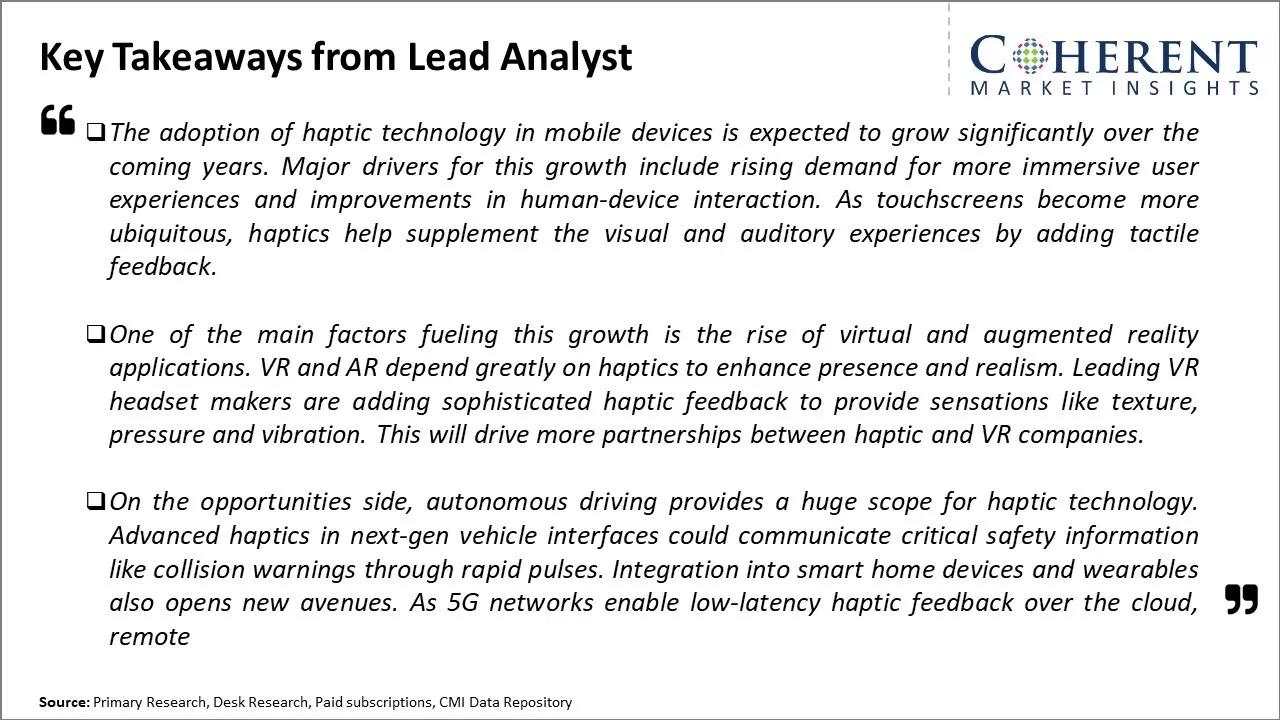
To learn more about this report, Download Free Sample
Haptic Technology for Mobile Devices Market Challenges:The haptic technology for mobile devices market faces several challenges. Smartphone manufacturers have been slow to adopt advanced haptic feedback capabilities in their devices due to the high costs involved. Customers also lack awareness about this technology and its benefits, making them hesitant to pay premium prices for devices with haptics. Additionally, developing sophisticated and customizable haptic experiences requires extensive research and testing. Limited patents and intellectual property protection pose risks for companies as well. Overall, achieving mass-market adoption while keeping costs affordable remains an ongoing challenge for players in this sector.
Haptic Technology for Mobile Devices Market Opportunities:
The haptic technology for mobile devices market presents multiple opportunities for growth. Rising consumer demand for more immersive user experiences is driving OEMs to explore innovative haptics. Emerging applications in virtual and augmented reality, online gaming, automotive, healthcare and beyond also need sophisticated haptic feedback.
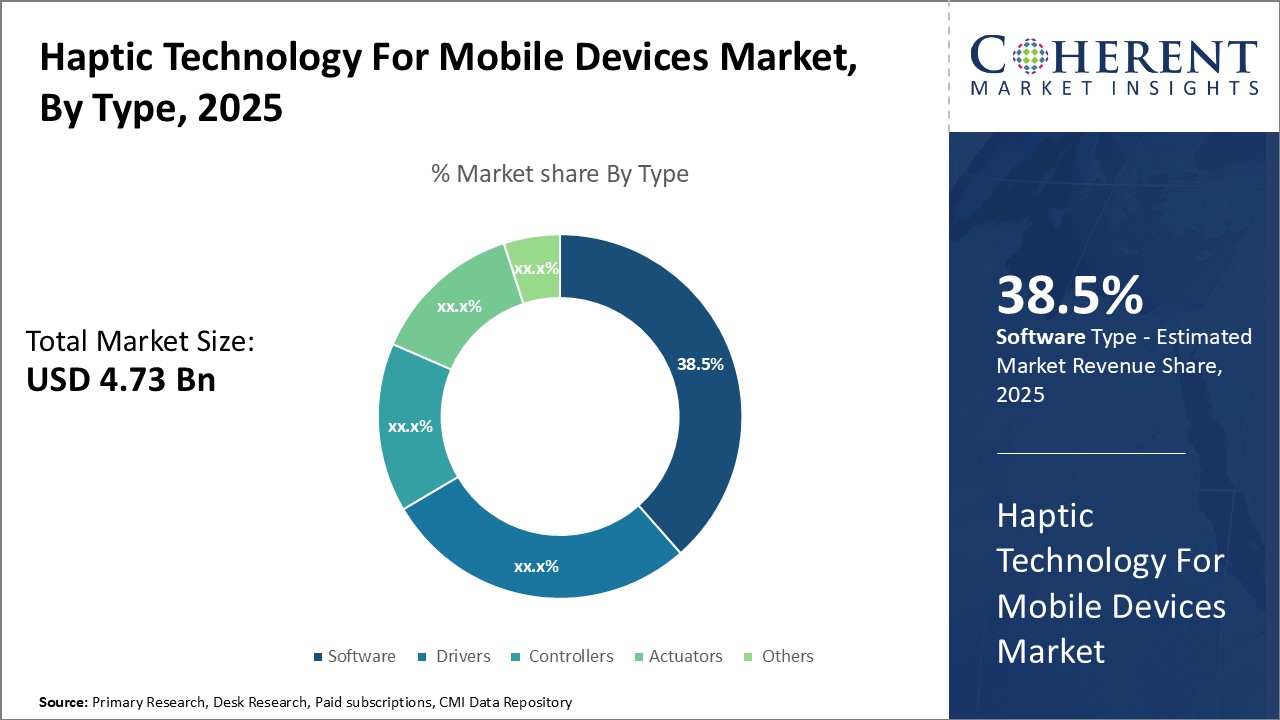
Discover high revenue pocket segments and roadmap to it: Download Free Sample
Insights By Type, Software holds the highest share of the market owning to its role in enhancing user experiencesoftware segment in the haptic technology market for mobile devices holds the largest market share of 38.5% in 2025. Software plays a vital role in processing sensory feedback and integrating haptic functionalities into the operating systems and applications. Advancements in software are allowing developers to design more immersive experiences for users. Sophisticated haptic effect libraries and software development kits (SDKs) are enabling app designers to embed customized haptic cues into games, multimedia, and other content. Growing immersive capabilities of haptic software solutions are helping to mimic real-world tactile sensations through mobile screens. Major tech giants are heavily investing in R&D to develop more intuitive and engaging haptic experiences through software innovations. As advanced touchscreen technologies utilizing haptics become mainstream, the need for optimized software to support different types of haptic hardware is increasing. The software segment is expected to grow steadily with continued evolution of programming interfaces for haptics.
Insights By Application, Smartphones contributes the highest share of the market owing to rising demand for rich multimedia and gaming experiences
Within the application segments of the haptic technology for mobile devices market, smart phones account for the largest revenues. This is mainly due to the immense popularity of smart phones and growing consumer demand for enhanced user engagement through mobile gaming and multimedia. Haptic feedback enables more vibrant and interactive content across various smart phone applications such as music, videos, maps, social media, browsers, and games. Leading smart phone manufacturers are aggressively pursuing sophisticated haptic solutions to offer differentiated features. Emerging applications of haptics in areas like virtual/augmented reality and mobile payments are also opening new revenue streams for smart phone manufacturers. As mass adoption of advanced haptic smart phones gathers pace, original equipment manufacturers will continue investing heavily in partnerships with haptic technology providers to integrate customized solutions.
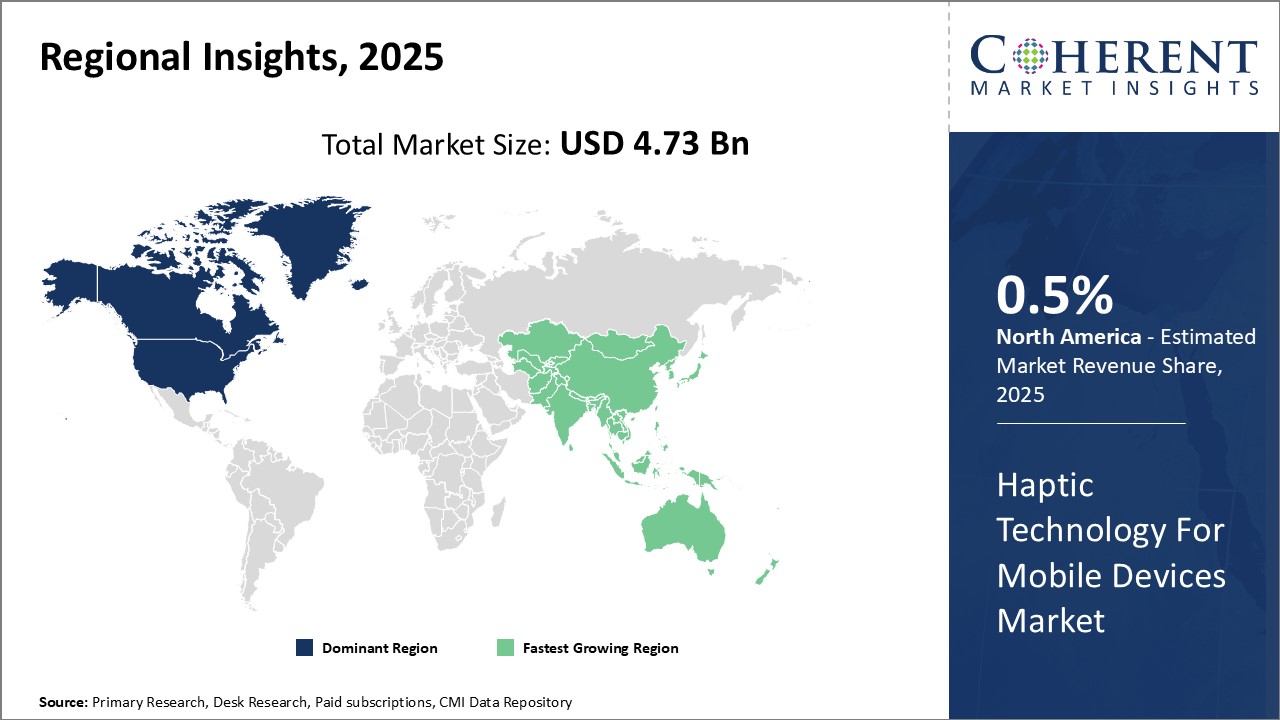
Need a Different Region or Segment? Download Free Sample
North America has emerged as the dominant region in the haptic technology for mobile devices market. This can be attributed to the strong presence of leading technology companies in the U.S. and Canada that are investing heavily in R&D of haptics. Companies like Apple, Microsoft, and Amazon are developing advanced haptic feedback systems for their flagship products like iPhones, Surface devices and Kindle e-readers. The consumption of haptic-enabled smartphones and tablets is high in the region, followed by their adoption in wearable devices, automotive infotainment systems, and gaming controllers.
Furthermore, several haptic chip manufacturers are based in North America which ensures the easy availability of haptic components and solutions for mobile device OEMs. Unlike some other regions, intellectual property rights are strongly protected here which motivates companies to invest in innovative haptics R&D. Export of haptic devices from North America is also contributing to its market dominance globally. However, with rising labor and material costs, mobile device assemblers are looking at other emerging markets for manufacturing.
Among growing regions, Asia Pacific is emerging as the fastest expanding market for haptic technology in mobile devices. The presence of leading Android smartphone manufacturers in countries like China, South Korea, Taiwan, and India is driving the demand. As the mobile gaming audience expands rapidly in Asia, haptic feedback is gaining importance for an enhanced gaming experience. Asian consumers are showing high interest in latest technologies and the expanding middle class is increasing the demand for premium haptic-enabled smartphones and tablets.
Countries like China and India also offer a talent pool of engineers at comparatively lower costs which is attracting global haptic tech companies to set up their R&D facilities locally. Besides domestic consumption, Asia is also becoming a major exporter of haptic components as well as haptic-integrated mobile devices. Favorable government policies encouraging digitalization and Make in India initiative are fueling the growth further. As disposable incomes rise across Asia, haptic mobile devices are expected to penetrate deeper into the market.
Haptic Technology for Mobile Devices Market Report Coverage
| Report Coverage | Details | ||
|---|---|---|---|
| Base Year: | 2024 | Market Size in 2025: | USD 4.73 Bn |
| Historical Data for: | 2020 To 2024 | Forecast Period: | 2025 To 2032 |
| Forecast Period 2025 to 2032 CAGR: | 21.5% | 2032 Value Projection: | USD 18.49 Bn |
| Geographies covered: |
|
||
| Segments covered: |
|
||
| Companies covered: |
Immersion, Texas Instruments Incorporated, Precision Microdrives Limited, Johnson Electric Holdings Limited, AAC Technologies, Analog Devices, Inc., ALPS ALPINE CO., LTD., Microchip Technology Inc., Cypress Semiconductor Corporation, Methode Electronics, NIDEC COPAL ELECTRONICS, SMK ELECTRONICS CORPORATION U.S.A, Visteon Corporation, Semiconductor Components Industries, LLC, Synaptics Incorporated, Apple Inc., Samsung |
||
| Growth Drivers: |
|
||
| Restraints & Challenges: |
|
||
Uncover macros and micros vetted on 75+ parameters: Get instant access to report
*Definition: "The haptic technology for mobile devices market involves technologies that generate tactile feedback, generally through vibrating motors or electrostatic friction, in mobile devices like smartphones, tablets, wearables, and other consumer electronic devices. This haptic feedback enhances user experience by allowing users to feel and interact with digital content and interfaces through touch."
Share
Share
About Author
Monica Shevgan has 9+ years of experience in market research and business consulting driving client-centric product delivery of the Information and Communication Technology (ICT) team, enhancing client experiences, and shaping business strategy for optimal outcomes. Passionate about client success.
Missing comfort of reading report in your local language? Find your preferred language :
Transform your Strategy with Exclusive Trending Reports :
Frequently Asked Questions
Joining thousands of companies around the world committed to making the Excellent Business Solutions.
View All Our Clients